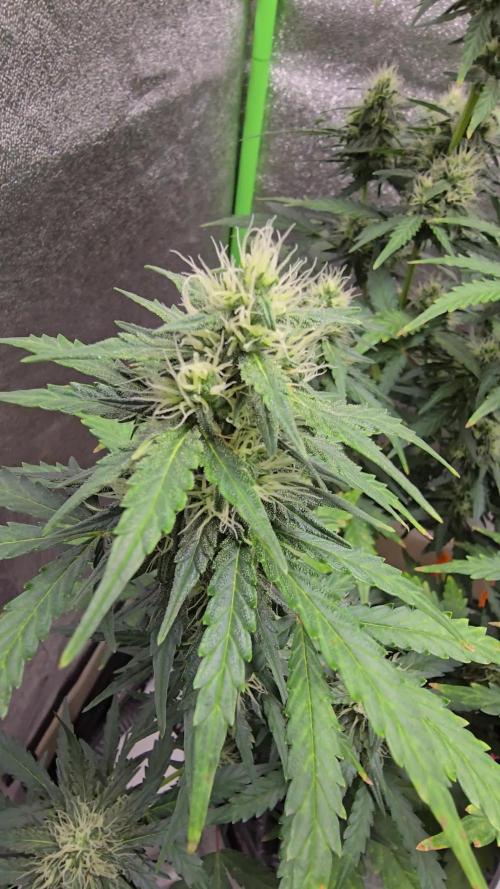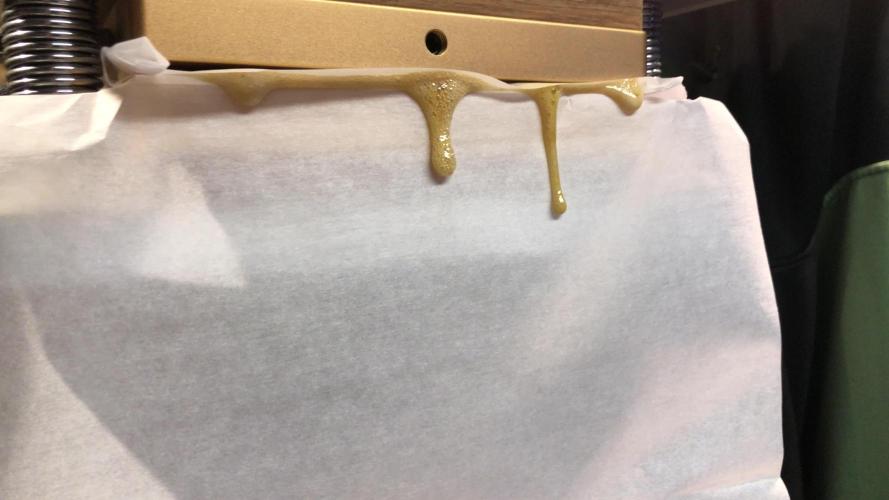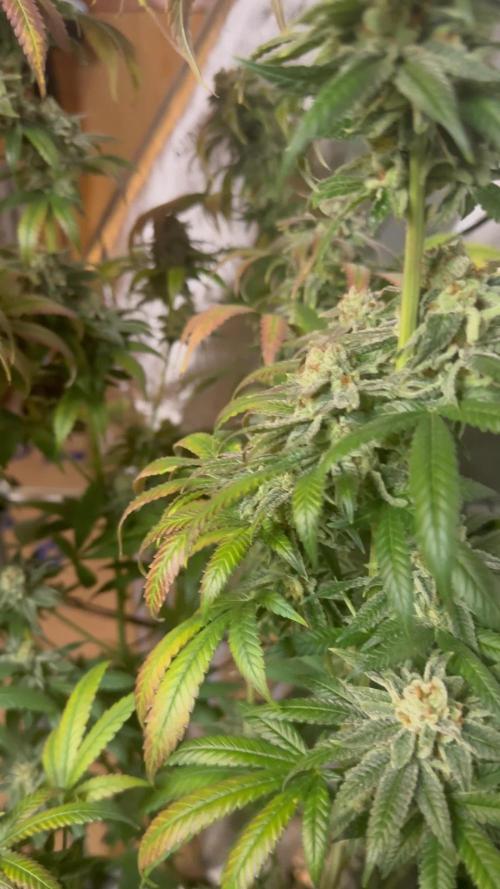The Grow Awards 2026 🏆 































Likes
Comments
Share


@Kloud9gardenz
Follow
Space is limited and I'm struggling with the time to keep up with these plants since things are back to normal on my parts of town. Just gonna keep about eye on em at keep defoliating. Plants flipped after 1 month veg
Likes
18
Share


@TheFairyBudMother
Follow
I'm just excited to get my harvest on here! I believe this will be my biggest of the 3 plants. I have it all mostly trimmed. I will dry trim a bit later and weigh. I will try it once it's dry, though it is tempting to smoke a bowl of the hash fur I pulled off everything with tweezers.
More photos and a review of Platinum Purple to come.
Thanks everyone @GrowDiaries for making this site and to the grow community for the support, encouragement and the wisdom of your experience.
Grown from veganic clone from Buds & Roses.
Dry in peace, my little buds!
Dried in brown paper bags after a half assed wet trim. Dry trimmed after stems snapped and put into a canning jar to cure. Vaped trimmings with popcorn nug.
Biggest mistakes of this grow:
Not vegging longer
Not using a PPM meter and
using extremely hard tap water
Not starting from seed
Not keeping the space cleaner (fur & bugs)
Not using individual trellises
Not using ventilation besides fans
Not using enough fans
Best lessons learned: I loved growing weed. Being on this site in a supportive community made it especially fun.
Small yeild but when you consider I pay 30-60/8th at the pot store and that this was my first grow and I feel lucky to have made it to harvest , getting a half oz out of one plant is more than fine by me.
Likes
9
Share


@HIAZ_urbanbudfarmer
Follow
Busy week getting the new setup going. GG is going really good has taken to training well. Expecting a bit of stretching off her in flowering. Can notice the sativa traits in her with more distance between nodes, and her slimmer sativa type leaves . Have noticed how sticky she's starting to get when training her, left with sticky resin coated fingers😋 she's a nice plant
Likes
13
Share


@KirbyFarm
Follow
The thickness on the stems is impressive this week. White hairs have started to show, and the top from last week started to form two main stems. I’m wondering if I topped them too late as I’m not sure how much taller they will become. I’m going to lst the split if they get taller.
Likes
6
Share


@Foggedaboudit
Follow
Last round of defoliation until harvest. These girls are officially in bulk mode. Again, 3 completely different phenos. That purple one is something to behold!
Likes
4
Share


@scooter112
Follow
It's a snow storm going on in this tent! Just luv how frosty the buds are getting 😀
Likes
5
Share


@Rizza78
Follow
Smooth few days after the defoliations. They seem to be happy. Malted Milk can be very temperamental but I have been catching on to her ways. Still wary with my feedings tho. Want to give all these different nutes and unknown what the results will be? Installed ac units in each room to ensure good temperatures and RH outside the tents. Hoping for another good week!
Likes
52
Share


@UnorthadoxDude
Follow
Hello and welcome to week 2 of veg phase for these five Epsilon F1 Hybrid ladies.
Last week is now complete with daily updates and media so please check it out.
For this week well frankly I am expecting massive growth. I have taken 3 fingered leaves from Normani today and five fingered from Ally.
It takes more time to photo and diarise but it is rewarding to look back on! See you tomorrow!
Day 9: Nothing to report. Sorry for lazy photos. Oh... I joined twitter @UnorthadoxDude
Day 10: Fertigated 5l. Loving Ally's party hands 👈👉
Day 11: Normani has overtaken Ally as the tallest and largest plant. Dinah has overtaken Lauren in a similar fashion. All girls kooking good except for some odd marks here and there (see video). Today after the photos and video and when she was back in the tent. I took about 4 or 5 leaves off each girl. You'll see tomorrow.
If you're here from Twitter, where I am also @UnorthadoxDude, please say hello in the comments! I've just joined and want to gauge if it is worth the time.
Day 13: Heights: Ally 23cm Normani 28cm Lauren 24cm Dinah 19cm Camila 17cm The girls have begun stretching it seems.
Day 14: Fertigated 5l and performed LST and defoliation. Normani height was 32cm.
End of week summary: Huge week of growth and these ladies are only just getting started. The pheno difference of Dinah is stark but super interesting.
Likes
26
Share


@Hempface86
Follow
She is starting to swell up and bud growth is at a good pace right now.... I'm really hoping for big things and some dark colors.. Thank you again to divine seeds for throwing this contest together.. Also, good luck to everybody that is in it.. Thank you guys for stopping by God. Bless and happy growing ✌️
Likes
15
Share


@DeepRootsGrowTrees
Follow
AUTO MOON ROCK / DIVINE SEEDS
Week #13 OVERALL
WEEK #8 FLOWER
This week we are getting close to harvest you can see the plant has a crazy fade already going on. Buds are getting denser and super sticky. Stay Growing!!
Thank you for stopping by and taking a look it's much appreciated!!
THANK YOU DIVINE SEEDS!!
AUTO MOON ROCK / DIVINE SEEDS
Likes
10
Share


@MindFlowers68
Follow
Trimming started at day 11 of drying and took roughly 6 hours to complete. The final yield was 483g dried flower and 8g of dry sift from my trim bin. I pressed 6 oz into flower rosin with a yield around 25% ending up with 42g of rosin.
Likes
13
Share


@CheeRz
Follow
Unfortunately I can't post as many pictures this week because I'm on vacation. Of course Lady Runtz will still be well taken care of. 💚💚💚
Likes
33
Share


@Sidbank
Follow
1 day of 9 flowering week: They look nice even with 3 weeks calcium deficiency and still swelling. I only water these plant with water ;). In one of the Hulks a blueberry breaks through i see on the leafs. Smell is really strong, thick and rich in terps.
3 day of 9 flowering week: Going to mature, dying very rough
7 day of 9 flowering week: One SB is out, next day is last of their lives, next week: Harvest!
Likes
7
Share


@Geili_Seili_fireinfireout
Follow
Diese woche war ziemlich stillstand. Denke auch das sich nichtmehr viel tun wird. Tippe das sie in ca 3 wochn fertig sind. Werdn noch ein bisschen an gewicht zulegen denk ich. Aber viel abwerfen werden sie nicht.
Sind aber ideal für extrakte. Sind ab tag 14 komplett mit resin überzogen umd wird von tag zu tag mehr.
Likes
9
Share


@Gonzo_Green_Thumb
Follow
Such a great ending to the week. We finally got to the finish line for growing. Now comes the dry and cure.
Likes
1
Share


@kauilmayel1996
Follow
Creciendo bastante bien
Talvez yo no sé cómo hacer el lst pero está aguantando bastante bien está nena
En un semana creció bastante!!!
Estoy contento
Me está aguantando
Ok
Sábado
No sé si el lst ayuda al crecimiento pero siento que va a avanzando mucho...
No tengo ni idea de que estoy haciendo ni estaba preparado para hacer amarres
Ni tengo idea de cómo lo voy a hacer... Pero realmente quería experimentar ya que veo que todos lo hacen aún que me da miedo romper la planta o estresar la y tampoco se que cortar!!! 😔



















